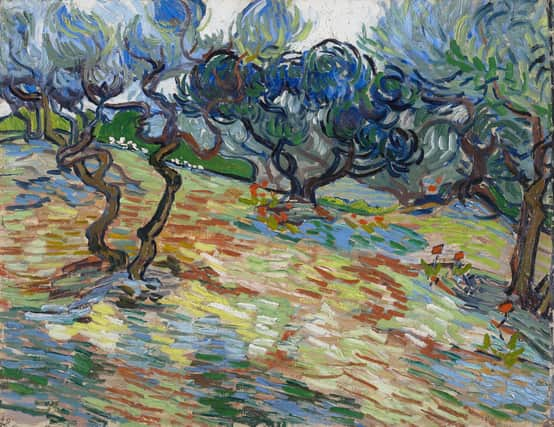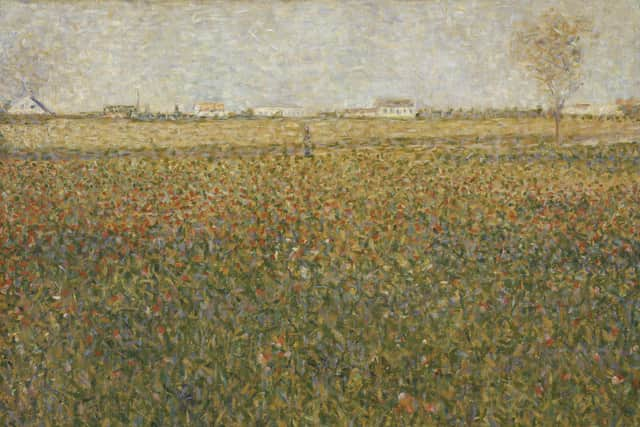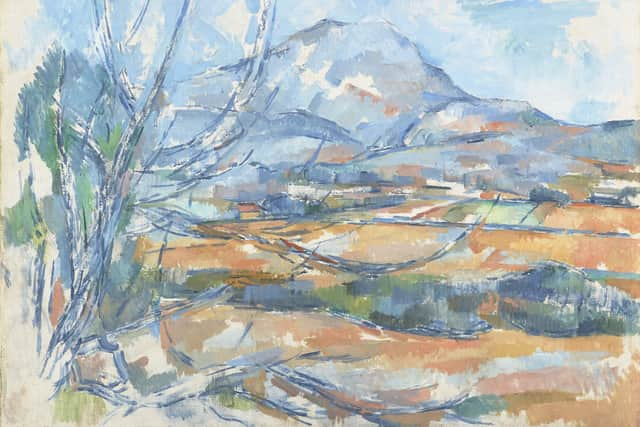Edinburgh Art Festival review: A Taste for Impressionism, Scottish National Gallery


A Taste for Impressionism: Modern French Art from Millet to Matisse, Scottish National Gallery, Edinburgh ****
In 1960, Alexander Maitland gifted 21 works of art to the National Galleries of Scotland. At his death in 1965, he bequeathed five more. All 26 were paintings or sculptures produced in France during the exciting years that saw Impressionism blossom in the 1860s and then Picasso, Matisse and others develop radically new styles in the early 20th century. The National Galleries’ would-be blockbuster for this summer, A Taste for Impressionism: Modern French Art from Millet to Matisse, sets out the story, not only of the art, but also of the Maitlands, the other collectors whose generosity has enriched the national collection, and the curators who steered its development both by encouraging benefactions and making judicious purchases.
Advertisement
Hide AdAlexander Maitland – he was later knighted and so is remembered as Sir Alexander – made his munificent gift in 1960 in memory of his wife Rosalind, who had died the previous year. The couple had been collecting since the 1930s and among their most important purchases were Monet’s Haystacks, Van Gogh’s Orchard in Blossom and Gauguin’s Three Tahitians, bought in 1936. Cézanne’s Mont St Victoire was bought by Maitland in 1959, however, and so went almost straight into the national collection. He bought Matisse’s The Painting Lesson in 1960. It came to Gallery on his death in 1965 and its purchase was perhaps prompted by the opening in 1960 of the Scottish National Gallery of Modern Art and certainly the Matisse is one of its greatest ornaments.
The idea of a gallery devoted to modern art had first been put forward by the galleries’ keeper, Stanley Curister, in the 1930s. He had been appointed in 1925 and is one of the most important figures in the galleries’ history. In his first year in office, the gallery acquired both Monet’s Poplars on the Epte and Gauguin’s Vision after the Sermon. If Monet had by then become respectable, the Vision after the Sermon, although a key picture in the history of modern art, was a very bold purchase. So too was anything by Van Gogh, but in 1934, Cursiter bought his Olive Trees, another true masterpiece.
More than that, however, it was Cursiter who advised the Maitlands in their collecting. He is such a major figure in this story, it is a shame there is no portrait of him here. A fine portrait by James Guthrie of Rosalind Maitland, in whose name the Maitland gift was given, is not here either. A few digressions of this kind might have enlivened the show, but there are none. It is strictly the national collection of French art from those critical years and follows the conventional story of Impressionism and its legacy. To round out that story, however, there are also half a dozen loans, mostly from other Scottish public collections.
There are also one or two pictures missing, however, that should be here. The most notable is Cézanne’s magnificent The Big Trees. Bequeathed by Anne Kessler and dated from c. 1902-4, it is a really grand example of Cézanne’s late style. It is signalled on the walls, but won’t appear there till September. The exhibition was originally planned for 2020, which would have been the 60th anniversary of the Maitland gift, but history intervened and when it did become possible to put it on, loans had been agreed which meant that several pictures are elsewhere.
Roughly following chronology, the first room is devoted to the Barbizon painters, although Corot, one of the outstanding painters here, wasn’t strictly one of them. His lovely Ville d’Avray – Entrance to the Wood is a star. Bought in 1927, it is another notable Cursiter purchase. So too is Pissarro’s early but very grand The Marne at Chennèvieres, which is also hanging here. Including it in this room makes the point of the continuity between the Barbizon painters and the Impressionists. This group does also include some of the earliest acquisitions of relatively modern French painting, for in 1911 the bequest of Hugh A Laird brought Daubigny’s lovely, crepuscular View of Herblay into the national collection, together with pictures by Constant Troyon and Charles Emile Jacque.


The main room is dominated at one end by the Gallery’s three Gauguins, the Three Tahitians, Martinique Landscape, also a Maitland picture, and Cursiter’s pioneering purchase, The Vision after the Sermon. Degas’s portrait of Diego Martelli presides at the other end. Bought in 1932, it is yet another major Cursiter acquisiton. The Maitlands’ four Degas pictures are hanging here while their several Degas bronzes are set out on the floor. Monet’s Boats in Harbour, his Haystacks and Poplars on the Epte are hanging alongside. In this company, however, Alfred Sisley’s Molesey Weir, Hampton Court, from 1874, part of the Maitland gift, and Pissarro’s Kitchen Garden from the same year, the gift of Mrs Isabel Trail, stand out as beautiful examples of early Impressionism. (Mrs Trail also gave Monet’s Church at Vétheiul and Vuillard’s Still life with a Candlestick.)
Advertisement
Hide AdCézanne’s Mont St Victoire is a star in this room, but so too is Seurat’s lovely La Luzerne, Saint-Denis purchased in 1973. The picture which will attract most attention though is not a painting at all, but the tantalising X-ray of the Maitlands’ Van Gogh, Head of a Peasant Woman. It shows a shadowy self-portrait painted on the back of the canvas that was hidden 100 years ago beneath glue and cardboard. Its restoration will be tricky, but surely feasible, though who knows what exactly it will reveal.
One of the back rooms is devoted to works on paper including a striking woodcut by Matisse, a lovely Seurat drawing, and a beautiful Monet pastel which is a recent acquisition. The other back room includes a group of works by Boudin and several by Fantin Latour, but the stand-out picture in this room is an early painting by Monet, Seascape, Shipping by Moonlight, an inspired purchase in 1980.
Advertisement
Hide AdMatisse’s Painting Lesson, Derain’s stunning Coullioure from 1905, Braque’s cubist The Candlestick from 1911 and small paintings by Vuillard, Bonnard, Picasso and others make a bit of a miscellany in one of the front rooms, and the wall colour doesn’t help. It is a strident yellow that sucks the life out of the paintings as blotting paper sucks up liquid. Some of the other room colours are painfully harsh but this is awful. Matisse’s exquisite Painting Lesson shrivels like a cut flower out of water. Can we petition for a repaint? It is a relief to go through to the last room where all of Matisse’s suite Jazz is hung together in white frames against a black wall. It sings.


The catalogue published alongside the show is titled The Impressionist Era: The Story of Scotland’s French Masterpieces. Gauguin’s Three Tahitians, Van Gogh’s Olive Trees, the two Cézannes and several others are true masterpieces and for many of them, too, we have to thank the vision and no doubt the persuasive tact of Stanley Cursiter. French paintings from this era are not necessarily all masterpieces, however, and indeed some of these pictures are fairly humdrum, but among them, you have to spot the fake. One has been deliberately hung to test your judgment.
A Taste for Impressionism: Modern French Art from Millet to Matisse, National Gallery of Scotland, Edinburgh, until 13 November